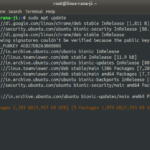What is a blogging platform?

A blogging platform can be defined as an online publishing application that provides a platform for authors to create, publish, and manage blog content. It is designed to simplify the process of creating and managing a blog, allowing authors to focus on content creation rather than having to worry about the technical aspects of website design and maintenance. Common features of blogging platforms include user accounts, comment sections, and customizable templates and themes. Furthermore, many blogging platforms allow users to integrate their blogs with other social media platforms, providing an effective way to attract readers and boost engagement. Ultimately, blogging platforms are an invaluable tool for authors who are looking to share their ideas and connect with an audience.
Benefits of using a blogging platform
Using a blogging platform offers numerous advantages for individuals who wish to share their thoughts, ideas, and musings with the world. From the ability to reach a wide and varied audience, to the convenience of having a platform that offers a simple and straightforward interface, blogging platforms can be a powerful tool for individuals looking to get their message out to the masses. With the ability to customize and personalize the look and feel of the blog, users can make the blog their own and create a space that truly reflects their own voice and personality. Additionally, blogging platforms often offer a variety of features, such as comment sections, analytics, and the ability to monetize the blog, that can help bloggers gain a following and grow their audience.
Examples of notable blogging platforms

Blogging platforms, or content management systems, are web-based applications that enable users to publish and manage their own content on the web. Examples of notable blogging platforms include WordPress, Blogger, and Tumblr. WordPress in particular is highly popular, being used by millions of users around the world. It is a free and open source platform that provides a powerful and user-friendly interface for creating and managing content. With WordPress, users can easily create posts, pages, and media content, as well as customize the design of their website. Blogger, on the other hand, is a hosted blogging platform owned by Google. It is a relatively simple platform that can be used to create basic websites, such as personal blogs and portfolios.
What is a publishing network?
A publishing network is a type of online platform which enables the publication of digital content. It is a form of digital business which involves creating and distributing content, such as books, articles, videos, and music, from one or more authors to an audience. The network provides the tools and technologies for content creators to distribute their works to a larger audience than would be possible through traditional methods. By utilizing the network, authors can collaborate on projects, receive feedback from readers, and monetize their works. Additionally, the network provides a layer of protection for content creators through digital rights management, which helps to ensure that their work is protected from plagiarism and unauthorized usage.
Benefits of using a publishing network
Publishing networks are becoming increasingly popular tools for authors to disseminate their works to a larger audience. They offer numerous benefits to those that use them. One of the primary benefits is the potential to increase the visibility of an author’s work. A publishing network provides the opportunity to reach a broader audience, as authors can submit their works to a variety of different outlets. Additionally, publishing networks can provide authors with access to more diverse readers, as each outlet may have its own unique audience. Furthermore, a publishing network can make the process of publishing a work simpler and more efficient. It can streamline the process of submitting works to various outlets, and simplify the sometimes tedious task of formatting and preparing a manuscript for publication.
Examples of notable publishing networks
Blogging and Publishing Networks are an important part of the publishing industry. These networks are collections of publishers, authors, readers, and other stakeholders who collaborate to create and distribute written works. Examples of notable publishing networks include the Big Five, which is comprised of five of the largest publishers in the world; the Indie Network, which is comprised of independent publishers and writers; the Association of American Publishers, which is a trade association that represents the interests of publishers in the United States; and the International Publishers Association, which is an international organization that seeks to promote and protect the interests of publishers around the world. Each of these networks has its own unique characteristics, but all of them share the same goal of creating and distributing quality written works.
difference in between blogging and publishing network
Blogging and publishing networks are both forms of communication through the internet, but they differ in a few key ways. Publishing networks are primarily used to post and share digital content, such as articles and images, while blogging is primarily used to post personal stories or opinions. Additionally, blogging is often used to express one’s thoughts or feelings while publishing networks are used to share ideas in a more professional manner. Blogging usually involves writing content in the first person, while publishing networks often involve creating content that is more formal and structured. Furthermore, blogging is typically conducted on a single platform, such as a blog website, while publishing networks often involve multiple platforms and outlets. Finally, blogging is often done as a hobby, while publishing networks are often used.
Summing up
Blogging and publishing networks represent an important contribution to the information revolution of the present day. In a nutshell, they enable individuals to create content and make it available to a wide range of audiences. Through these networks, content creators are able to build relationships with readers, share their ideas, and express their opinions. This can be done through text-based formats, audio, video, and even multimedia. As a result, it has become easier for content creators to reach out to their readers and engage them in meaningful conversations. Furthermore, these networks have enabled the growth of online communities where individuals can collaborate and share their experiences. Finally, these networks have also enabled businesses to promote their products and services, and to gain exposure in the online world.






